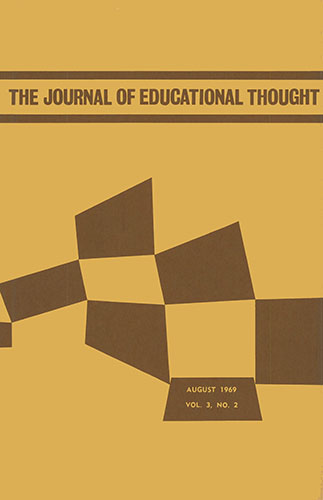An Integrated Approach to Teaching Effectiveness
DOI:
https://doi.org/10.11575/jet.v3i2.43563Abstract
This paper takes at least four basic positions which should be made explicit at the outset. First, the teacher is the key figure in a teachinglearning situation. (This may sound like a cliche.) A, corollary of this position is that all other contingencies of the educational enterprise, such as para-professionals, clerical and custodial staff, administration, instructional materials and educational technology, and the like, are peripheral in the sense that their fundamental role is to facilitate the emergence of pupils' learning. The second position is that the goals of education are essentially similar, if not the same, for all of us engaged in education. To state this position broadly and bluntly, the goal of our education in the ultimate analysis is to promote the well-being of mankind through the provision of quality education. The third position is that teaching effectiveness can be identified and determined only on the basis of growth in pupils' knowledge, skills, and action patterns. The fourth position which is quite obvious from the title of this paper is that classroom discourse is a means for determining teaching effectiveness.Downloads
Published
2018-05-10
Issue
Section
Articles
License
The Journal of Educational Thought retains first publication rights for all articles. The Journal grants reproduction rights for noncommercial educational purposes with the provision that full acknowledgement of the work’s source be noted on each copy. The Journal will redirect to the appropriate authors any inquiries for further commercial publication of individual articles. All authors wishing to publish in JET will be asked to fill in and sign a Consent to Publish and Transfer of Copyright agreement.
Authors must affirm that any submission to JET has not been and will not be published or submitted elsewhere while under considration by JET.

